Question#1 What was your company’s distinctive strategy for incorporating technology to meet the UN Sustainable Development Goal?
LIVE FR8’s distinctive strategy involved leveraging native Cloud app development to optimize road freight transportation, thereby improving efficiency, and reducing environmental impact. Our elegant and easy-to-use platform, that can be accessed for free from any connected device with a browser, connects all categories of shippers, carriers, and drivers in real-time, enabling seamless coordination of deliveries and minimizing the proportion of empty trucks on return journeys. Shippers can expose their loads at no cost. Transporters search for loads with a geocentric search for loads within a 300 km radius according to cargo and weight category. By harnessing data analytics, artificial intelligence, and any optional telematics devices, we can optimize route planning, reduce fuel consumption, and promote sustainable practices within the freight logistics industry. Note: LIVE FR8 for transporters is carbon tax auditable.
Question#2 What challenges did you face while working on your project/ initiative, and how did you overcome them?
Implementing disruptive technological innovation in a highly inefficient transportation sector came with several challenges. One of the main hurdles is cultural: overcoming resistance to change from traditional players in the industry. Convincing stakeholders to adopt a digital platform requires extensive education through demonstrating tangible benefits. We tackle this challenge by collaborating with industry associations, organizing workshops, and showcasing success stories to highlight the job-simplifying and positive impacts of our platform. Another significant obstacle is bridging the digital divide in developing countries where internet access is limited. We will partner with local governments, NGOs, and telecommunication companies to expand internet infrastructure and provide affordable access to our platform. One such partnership is with a US-based direct-to-satellite solution that provides a singular tracking platform, even beyond cellular range, worldwide. Being a highly data-light web application that can be used on cell phones and any other browser based devices, we’re able to facilitate the inclusion of small-scale industries and drivers in remote areas, even individuals, enabling them to benefit from the efficiencies and opportunities created by our platform.
Question#3 How did you involve local communities and stakeholders in your work, and what was their response?
Community engagement and stakeholder involvement are integral to our approach. We will conduct extensive outreach programs to involve local communities, smallscale farmers and other goods industries, and drivers. We organized a free online Udemy training course on the benefits of our platform to educate all interested parties and provide support for user onboarding and skill development. By involving the users in the decision-making process, we ensured their needs were considered and incorporated into the platform’s functionalities. Small-scale industries using LIVE FR8 Apps will have increased market access and thus improved financial opportunities. Drivers will see a reduction in empty journeys, leading to higher income, lower time wastage, and improved quality of life. The local communities appreciate the positive environmental impact of reduced emissions and an increase in road safety. Now that the bulk of the solution is built and deployed, we can take an iterative development approach in response to our users. Hence, our users’ involvement will contribute to the sustainability and success of our initiative.
Question#4 Which organizational skills and assets can be harnessed to provide goods/services without negative environmental and social impacts?
To provide goods/services that minimize negative environmental and social impacts, organizations should focus on harnessing the following skills and assets:
Adoption of technological innovation: Embracing cutting edge technologies enables efficiency gains through optimization, reducing resource consumption and environmental impact, while improving safety and quality of life.
Collaboration and partnerships: Engaging with stakeholders, governments, NGOs, local communities, and individual operators foster inclusive decision-making and helps address social and environmental challenges collectively.
Data-driven insights: Leveraging data analytics and AI technologies provides valuable insights for informed decision-making, enabling organizations to identify and mitigate negative impacts and maximize positive outcomes.
Sustainable supply chains: Implementing sustainable sourcing, production, and distribution practices minimize environmental footprints and promote fair labor conditions.
Transparency and accountability: Adopting transparent reporting mechanisms and adhering to rigorous authentication and sustainability standards ensure organizations are accountable for their actions, promoting trust among stakeholders.
By incorporating these skills and assets, organizations can drive positive change and contribute to the achievement of the SDGs while minimizing adverse environmental and social impacts.
Question#5 What is the role of businesses, governments, and civil society in achieving the SDGs, and how can they work together?
Achieving the SDGs requires a collective effort from the public and private sectors. Businesses play a crucial role as the drivers of innovation, economic empowerment and growth. They can contribute by integrating sustainability into their core strategies, adopting responsible business practices, and developing innovative solutions aligned with the SDGs. Collaboration between businesses, governments, and civil society organizations is essential to create an enabling environment that supports sustainable development, including tax and job creation incentives. Governments should provide policy frameworks, incentives, and regulations that encourage businesses to adopt sustainable practices. Civil society organizations play a vital role in mobilizing public support, raising awareness, and advocating for sustainable policies. By working together, these three sectors can leverage their unique strengths and resources to drive systemic change and accelerate progress towards the SDGs.
Question#6 What impact has your project had, and what are your future goals?
LIVE FR8 has a significant impact on the logistics industry and beyond. By optimizing freight transportation, we have started to reduce empty truck journeys, resulting in substantial fuel savings and reduced emissions. We’re signed up over 1,000 cargo transporters. Our platform has empowered small-scale industries and drivers with access to a broader market, leading to increased economic opportunities and improved livelihoods. Looking ahead, our future goals include expanding our platform’s reach to more developing countries, thereby bridging the digital divide and fostering inclusive economic growth. We aim to enhance our technology further, incorporating AI algorithms and predictive analytics to drive even greater efficiency gains. Additionally, we plan to collaborate with governments and international organizations to advocate for sustainable logistics practices and contribute to the achievement of SDG #9 on a global scale.
Question#7 What advice do you have for individuals/ organizations seeking to create positive change and contribute to the SDGs?
My advice to individuals and organizations seeking to create positive change and contribute to the SDGs is threefold:
Be innovative: Embrace technology and innovative solutions to address social and environmental challenges effectively. Look for opportunities to optimize processes, reduce waste, and create sustainable business models.
Collaborate: Engage with stakeholders, forge partnerships, and leverage collective wisdom to amplify the impact of your initiatives. Collaboration enables access to resources, expertise, and diverse perspectives.
Measure and report: Establish clear metrics to measure your progress and impact. Transparent reporting creates accountability, builds trust, and facilitates continuous improvement.
Remember that lasting positive change begins with small steps. Start by identifying the SDGs most aligned with your organization’s mission and values and gradually integrate them into your strategies and operations. Promote cultural adaptation to innovation in your organization. By staying committed, resilient, and adaptive, you can make a meaningful difference and contribute to a more sustainable future for your business and the world.
Question#8 How would receiving this SDG Award help you improve your impact and scale your project?
Receiving the SDG Award will provide tremendous recognition and validation for our work and mission, helping us raise awareness about the importance of sustainable logistics and promoting the adoption of our platform on a larger scale. The Award’s prestige will attract potential users, partners, investors, and stakeholders, facilitating strategic collaborations and enabling us to expand our operations more rapidly. Additionally, the Award’s visibility would increase our credibility and influence, allowing us to advocate for policy changes and incentivize the adoption of sustainable practices within the logistics industry. Ultimately, this SDG Award will serve as a catalyst for scaling our project’s impact, driving positive change, and contributing to the achievement of SDG # 9, worldwide.






















